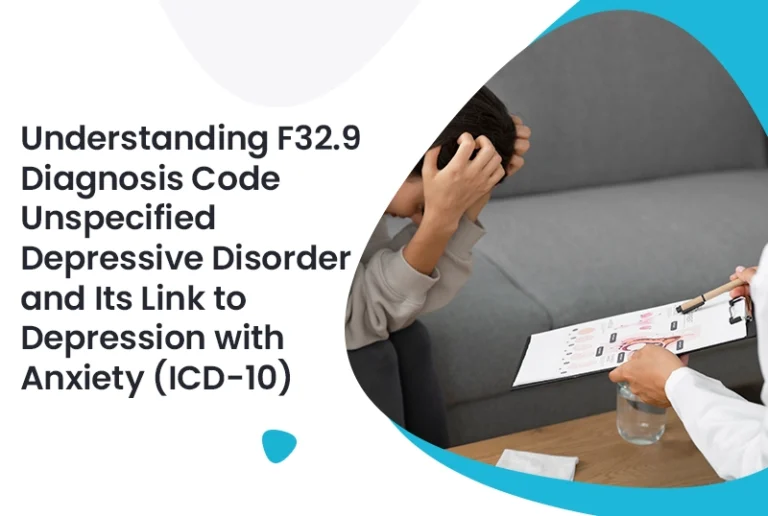Although the diagnosis seems nebulous when a patient enters your clinic and says, “I just feel weak,” it is medically accurate. That is where the ICD-10 code R53.1, used for generalised weakness, becomes crucial.
From internal medicine to neurology, almost every specialty reports a commonly occurring symptom that this code catches. Knowing when and how to apply R53.1 properly can help coders and healthcare providers expedite documentation and avoid billing mistakes.
In 2025, medical billing services for small practices must stay sharp with symptom-based codes like this. If you’re not coding it correctly, you’re leaving revenue on the table or worse, risking a denial.
Let’s explore how R53.1 works, when to use it, and how to avoid common mistakes.
Understanding R53.1 and When to Use It
R53.1 – Weakness refers to a general sense of debility or fatigue that cannot be attributed to a specific medical condition at the time of diagnosis. This is a symptom code, not a definitive diagnosis, and should be used cautiously.
Common clinical scenarios:
- Elderly patients experiencing a loss of strength
- Post-viral fatigue in primary care settings
- New patient evaluations where weakness is a key concern
- Initial assessments before lab or imaging results return
Symptoms that justify R53.1 usage:
- Muscle fatigue
- Difficulty walking or standing
- Lack of physical energy or stamina
Best practice: Pair R53.1 with lab tests (e.g., CBC, metabolic panel) to provide clinical justification and support the diagnosis in the EHR.
Billing Best Practices for R53.1 in 2025
R53.1 may seem straightforward, but payers are increasingly strict about how it’s used. Your documentation must be detailed, consistent, and directly connected to the code being billed.
Key billing tips:
- Always include documented symptoms: “The patient reports significant fatigue affecting daily activities.”
- Avoid using R53.1 as the primary code for prolonged care update to a more specific diagnosis once available.
- Don’t forget linkage: document test results, progress notes, and relevant prescriptions that explain the symptom.
When submitting claims, ensure your credentialing services reflect your specialty and the scope of services you provide. If you’re not credentialed for internal medicine, for example, frequent use of generalized symptom codes could raise red flags.
Reminder: Many denied claims result from credential mismatch, not the code itself.
Avoiding Overuse and Misuse of R53.1
As a symptom-based code, R53.1 should not be overused. Repeated use without an evolving clinical picture could flag your practice for review.
Common coding errors:
- Using R53.1 in place of a specific diagnosis after labs confirm a condition (e.g., anemia, hypothyroidism)
- Documenting “weakness” without any clinical detail
- Pairing R53.1 with unrelated services, like procedural claims
Instead, be specific. If weakness stems from a chronic illness or a neuromuscular disorder, use the more definitive code.
Alternatives once the cause is identified:
- D64.9 – Anemia, unspecified
- E03.9 – Hypothyroidism, unspecified
- G72.9 – Myopathy, unspecified
The Importance of Accurate Credentialing
Accurate coding isn’t just about diagnosis. It must align with your credentialing services. Insurance companies compare diagnosis codes with your provider taxonomy and credentials before approving claims.
For instance, R53.1 is commonly used in:
- Primary care practices
- Geriatric medicine
- Neurology and physical therapy
If your credentials don’t reflect these areas, your claims may be denied, even if your documentation is perfect.
Ensure:
- NPI registration is up to date
- Provider specialties and subspecialties are current
- State licensure and board certifications are active and documented
Credentialing isn’t a one-time task keep it updated to protect your reimbursements.
How R53.1 Fits into Medical Coding Workflows
R53.1 is a typical starting point for a diagnostic journey. In your medical coding process, it should never be the endpoint. Think of it as a placeholder that needs to be revised once further clinical data is available.
Tips for coders:
- Look for lab results, imaging, or specialist notes that might refine the diagnosis
- Verify if this is a standalone symptom or part of a broader condition
- Ensure medical necessity is documented if the code is used for follow-up visits
If your coding team is unsure whether to use R53.1 or a more specific diagnosis, don’t guess. Consult with providers or coders certified in ICD-10. Coding accuracy improves cash flow, reduces denials, and builds payer trust.
Pro tip: Use EHR prompts to alert staff when symptom codes have been used repeatedly without resolution.
Conclusion
R53.1 is one of the most frequently used ICD-10 codes in outpatient care, but also one of the most misunderstood. Used correctly, it reflects valid patient symptoms and supports reimbursement. Used incorrectly, it could lead to unnecessary denials, audit triggers, or compliance issues.
By ensuring detailed documentation, aligning credentialing data, and using sound medical coding practices, you can make the most of this code without falling into traps.
Stay updated. Stay compliant. And if you’re running a small or midsize practice, lean on medical billing services for small practices that understand the nuances of symptom-based coding like R53.1.
FAQs
Q1: Can I use R53.1 as a long-term diagnosis?
No. R53.1 is meant for initial or temporary coding. You should update the diagnosis once a specific cause is identified.
Q2: Will insurance pay for R53.1?
Yes, but only when appropriately documented. It’s best used alongside lab orders or pending diagnoses.
Q3: How should I document for R53.1?
Include the patient’s reported symptoms, duration, and impact on daily function. Note any labs or tests ordered to investigate further.
Q4: Does R53.1 support follow-up visits?
Only when medically necessary. Repeated use without a new diagnosis may be rejected by payers.







